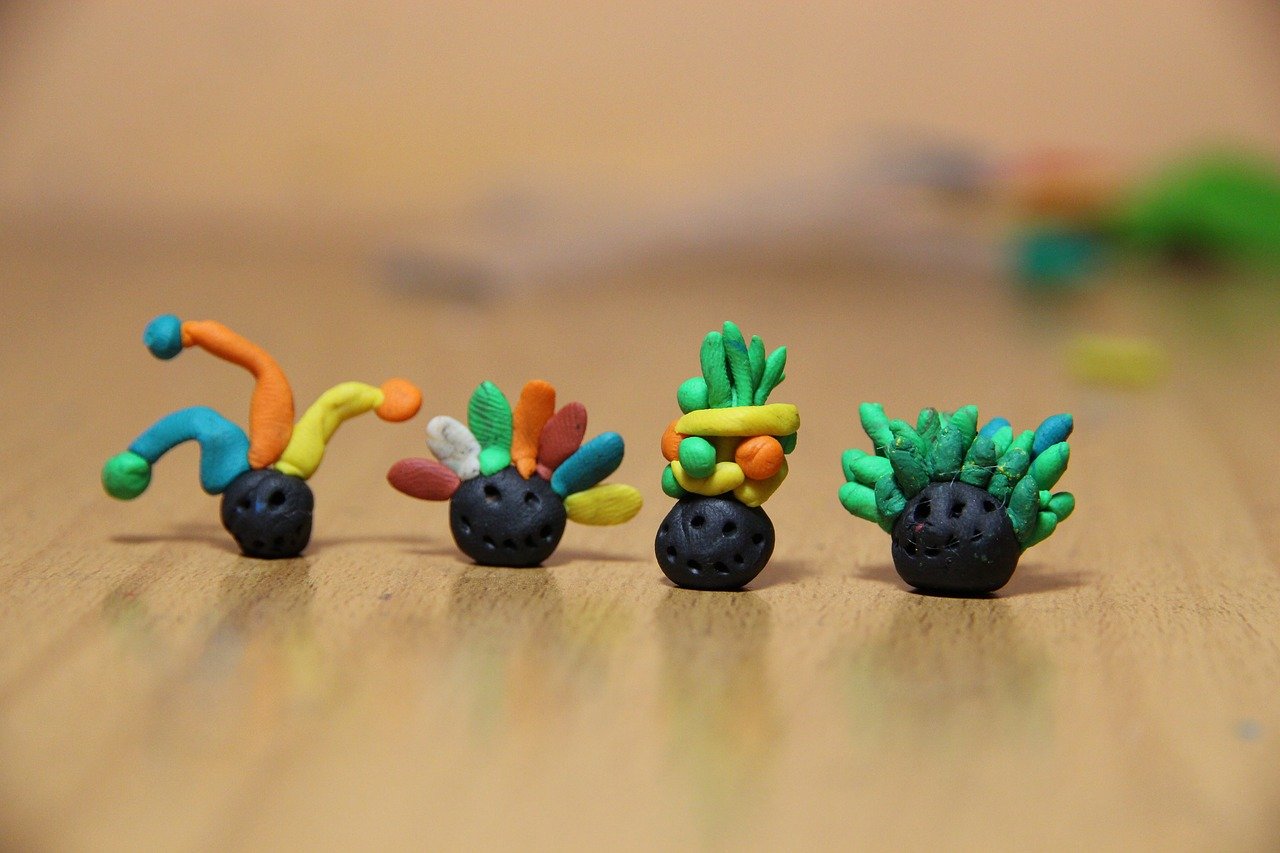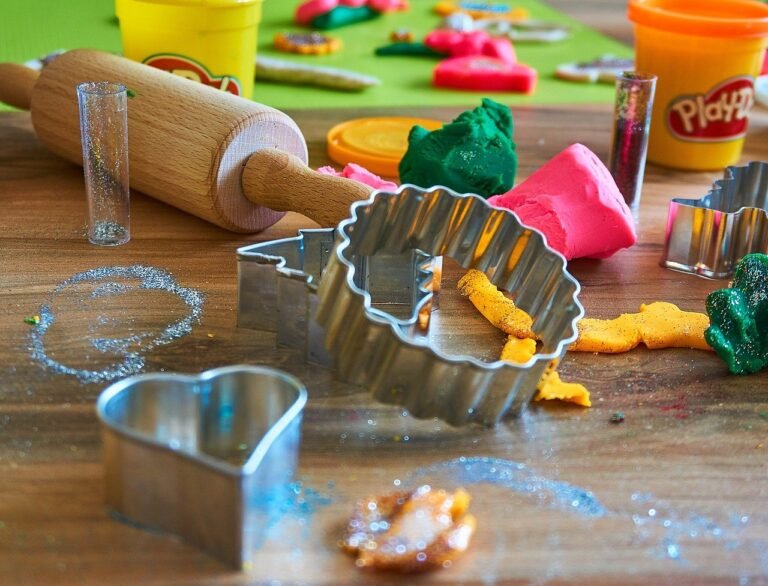How to Harden Playdough (Play-doh) the Easy Way?
Playdough is a modeling substance that people, usually children, use in arts and crafts. It is a non-toxic, putty-like substance made mostly out of the water, starch, and preservatives. Many children’s activities make use of playdough, and kids love it. But because playdough is reusable, it is sometimes difficult to preserve the things you or your kids make.
Similarly, you can use playdough to make ornaments, magnets, and even jewelry, but hardening it is necessary. So how do you easily harden playdough?
The easiest way to harden playdough is to bake it. You can it in a preheated oven at 200º F for about 30 minutes on a baking sheet. After baking, let it cool down before sealing it with waterproof varnish.
Although there are several ways to harden playdough, many factors come into play if you want the right outcome. Keep reading to find out how you can harden playdough without cracking it and other tips to preserve it the right way.
How Do You Harden Playdough Without Cracking It?
The issue with baking playdough is that it is most likely to crack. Sellers clearly state that the modeling compound is for repeated use. They do not design it for long-lasting creations or baking.
However, there are ways to work around this issue. For example, you can prevent playdough from cracking by baking it at a low temperature (93ºC) and checking on it regularly to ensure it does not bake for too long. If you overbake, it is likely to crack or burn but, if you do not bake it long enough, it won’t harden.
Also, make sure that it is in the center of the baking sheet for the oven to bake it evenly. The heat will draw the moisture out of the playdough to harden it faster. Once it is ready, use a toothpick to check if it is hard all the way through.
If you’re making jewelry, ensure that you add any metal pieces after baking, and remember to read the instructions on your playdough and varnish beforehand.
What Type of Playdough Can You Harden?
You can use store-bought playdough or make your own playdough at home. It is sometimes cheaper and safer to bake your own playdough, so it might be worth giving a try. Alternatively, people also use modeling clays meant for baking.
To make your own version at home, all you’ll need is one cup of flour, two tablespoons of cream of tartar as a preservative, one cup of water, half a cup of salt, one tablespoon of vegetable oil, and food coloring. Mix your dry ingredients and wet ingredients in separate bowls, then combine them and cook over low heat until a dough forms. Allow it to cool down and knead to soften it.
It is often hit-and-miss when you are making your own playdough. But, there are several recipes you can try along the way.
Is Playdough the Same as Plasticine?
Playdough is water-based, whereas plasticine is clay and oil-based. Therefore, the former is preferable for children. But plasticine does hold its shape better and is a good option for air drying long-lasting, more refined sculptures.
How Long Does It Take Playdough to Harden?
Playdough usually takes 30 minutes to harden in the oven. The size and thickness of the playdough will determine how long you will need to bake it, but flat pieces tend to bake better without cracking. If your playdough sculpture is small, try baking it for 10-15 minutes at first.
Although if you make it too thin, it might fall apart. It might be safer to air-dry it; you can leave it out in a warm, dry place for two to three days. While this method takes longer, it is probably safer for kids or if you are worried about shrinking and cracking.

Does Playdough Harden in the Freezer?
Playdough will harden temporarily in the freezer, but it will soften as soon as it gets back to room temperature. Plus, this method might ruin its consistency by crystallizing it, so there is really no point in freezing. But if you are using homemade playdough, it might be better to store it in a ziplock bag in the fridge, not the freezer.
If you are sensitive to smells and do not want to heat the playdough, then you might prefer air drying or sealing the playdough ornament as is. Although the material is said to be non-toxic, it does have a smell when heated up.
How Do I Revive Dried up Playdough?
If your playdough is stiff and crumbly, it has probably lost its moisture. To revive it, you need to knead it with a bit of water, but be careful not to add too much. You can also try steaming it for five to ten minutes or breaking it up in pieces and sealing it with some water before kneading it again.
Does Playdough Expire?
Playdough does not have an expiration date but it can go bad, in the sense that it may crack and become brittle. It can also get moldy if left in a damp area, so it is best to store it in its container. Keep in mind that there’s no saving moldy playdough, and it’s best to let it go.
Can You Harden Playdough in the Microwave?
Playdough is not usually baked in a microwave to harden it. You may need to use the microwave while making playdough from scratch, but not to bake it. If you try this method, you will be unable to control the intensity of the heat, making it more prone to cracking.
How Do I Seal Playdough?
The problem with hardening playdough is that it leaves an ashy texture and dulls the colors. The best way to get rid of this is to varnish it, which will also help preserve it longer. Use clear, waterproof varnish and a paintbrush to cover the piece in a light coat.
Ensure that your playdough has cooled down completely, and do not forget to protect the surface where you are working. Let it dry for a few hours before painting. Alternatively, you can also use mod podge.
Another way to seal your playdough creations is by using clear nail polish. This is a quick-drying method, ideal for smaller pieces; brush a thin layer over the piece for a glossy finish. You can also use a few drops of school glue mixed in water.
How Can I Paint Playdough?
It is best to paint after varnishing the playdough because the piece’s surface may be too rough for the paint. I would suggest using acrylic paint because it dries quicker, but you can experiment with other types of paints, such as non-toxic tempera paint. However, if you use colored playdough this step might be unnecessary.
Why Would You Want to Harden and Preserve Playdough?
So you might be wondering what’s the point of baking playdough and preserving it? Well, I still remember the excitement I felt as a child, opening my new, tiny containers of playdough and making miniature animals. I used to bring balls of playdough to my grandmother so she could make little ducks, and I wish I still had them.
Preserving your kids’ creations can be great moments. They’re nostalgic and are a good way of capturing memories. Even if all your kid made was a lump of dough, it would still make a great paperweight.
So there you have it, the fastest and easiest way to harden playdough. While it is not the best modeling compound to harden, it is fun to use it in experiments. There are many things you can make using playdough, and it helps kids explore their creativity; all in all, preserving it is doable and worth it.







